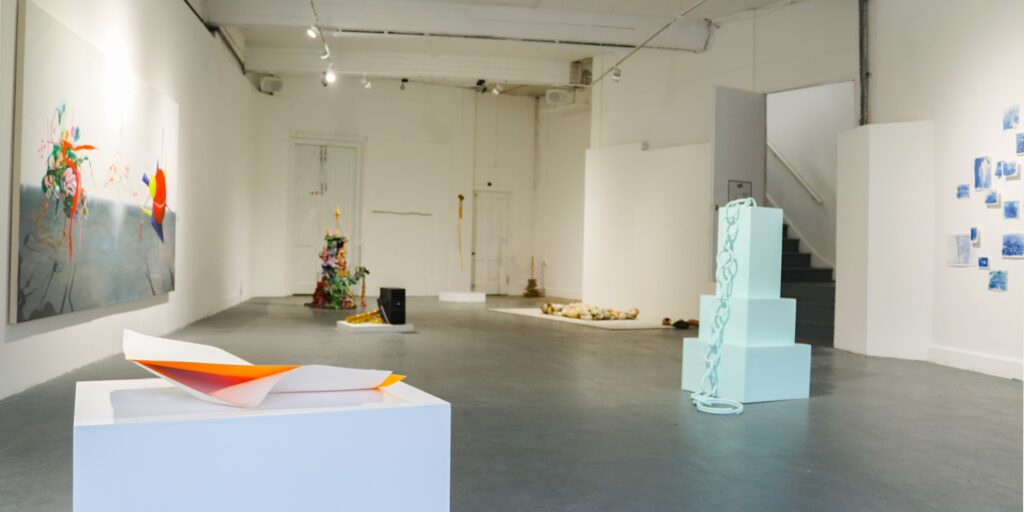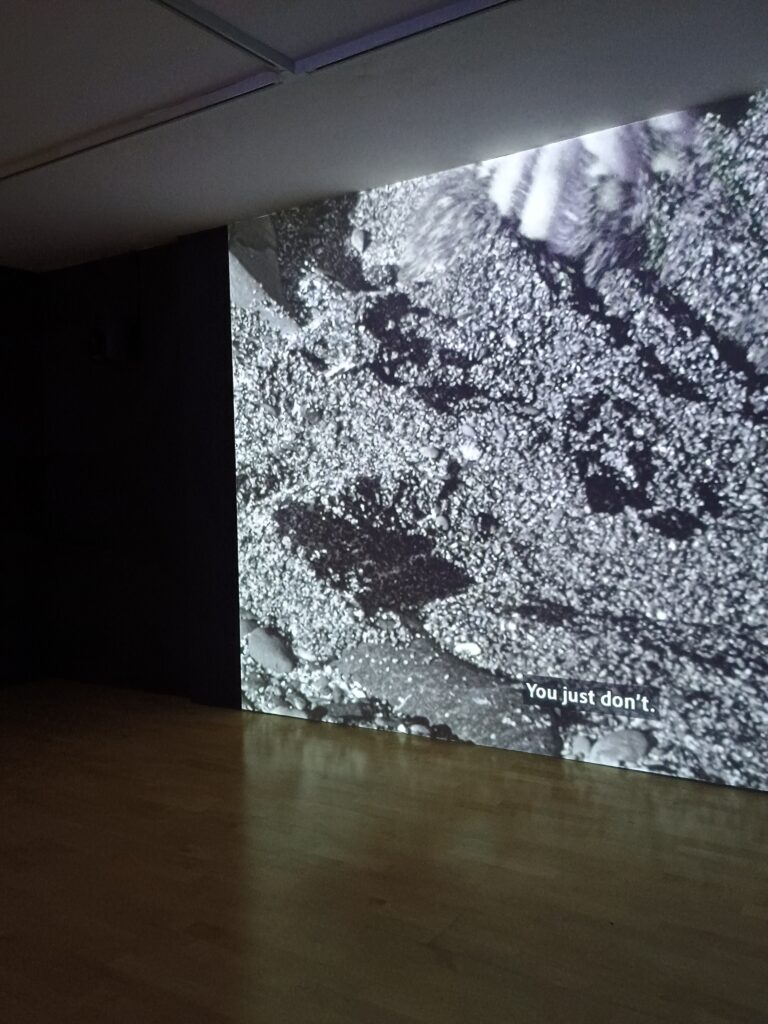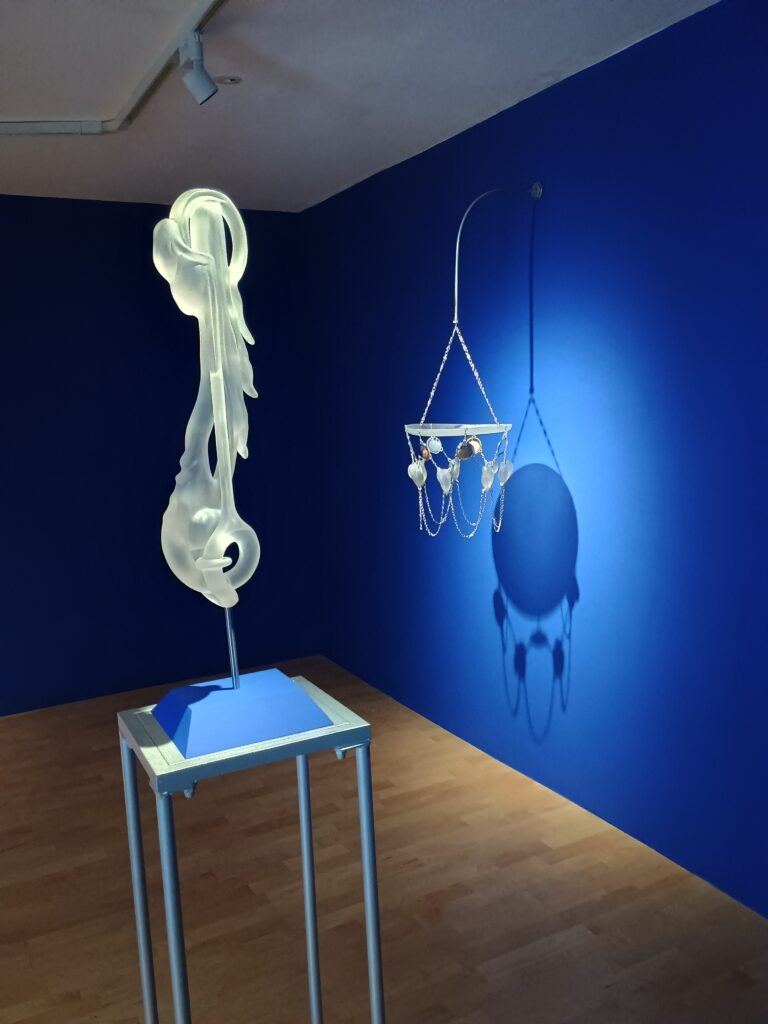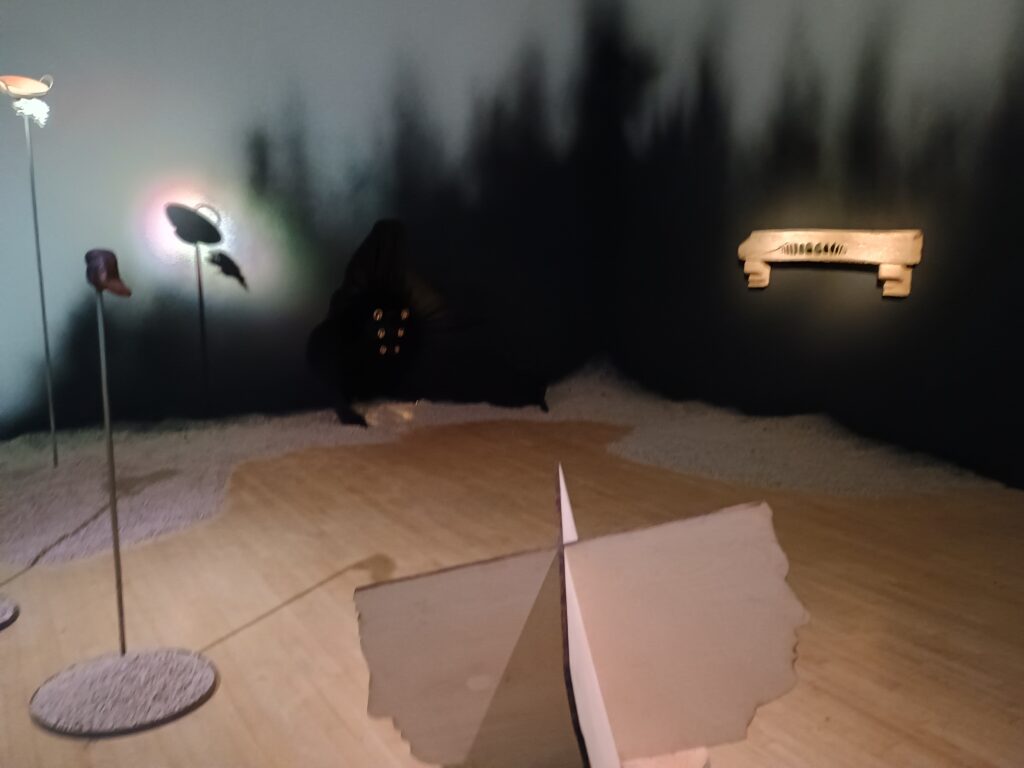Week: 9 – Curatorial Analysis Talbot Rice Trading Zone.

Talbot rice: Trading Zone
Trading Zone is the biennial exhibition hosted by the Talbot Rice Gallery, featuring the works of students selected from across Edinburgh College of Art. Developed by exhibition curator James Clegg, the central thesis of this exhibition is focused on the variety of art on display, with wall texts identifying the term ‘trading zone’ as a phrase coined by Peter Gallison to describe how different worldviews can meet within scientific projects. This form of conceptualizing is typical of a student exhibition, especially as these artists were located through an open call that made no specification as to mediums or concepts. The curator needs to present a theme; however, to impose an exclusive concept at the selecting stage would serve to limit student participation, and any attempt to conjure a unified theme with selected work can appear contrived and contribute, or even work, to the detriment of the perception of the artist’s work.
Conceptual Framing
A contrasting example of this is an exhibition that I co-developed and featured, Vessel. This was the 2023 annual instalment of the Surface Gallery’s Graduate Project, selecting graduating students from degree show exhibitions across the Midlands. Like Trading Zone, Vessel was an open call, with a goal to offer a platform to emerging artists; thus, the 8 selected artists had no unified themes or mediums. The title Vessel was selected to be specifically imprecise, a word that could encapsulate the featured art as a ‘container for something,’ whether that be physical or metaphorical. The issue arises with the extent of this concept. The theme was too broad. Therefore, the exhibition becomes ill-defined. The title and concept that the artworks are unified within offer nothing to the elevation of the exhibited artwork, as well as minimal direction to the exhibition display component. Works were arranged with a focus on the aesthetic appearance of the exhibition.

Exhibition Photo (2023), Taken on location at the Surface Gallery, Nottingham, image taken by Harry Mayston (15/11/23)
In contrast, Trading Zone highlights the diversity present in the Edinburgh College of Art. Though there is not a unified theme, the focus on interacting perspectives allows for a display curation that enables dialogue between pieces. In the upstairs white gallery, Emily Beaney’s Deviant (2021) and Wenqi Zou’s Liminal Threads (2025) are positioned opposite each other. Deviant is a looping black-and-white video piece using recordings of the ocean alongside audio of personal histories to express an intersect between art and healthcare, specifically focusing on and working with women who live with endometriosis. As a result, Beaney’s work functions to raise awareness to the illness that affects women and the ‘medical misogyny’ that leaves women in untreated pain. Zou’s Liminal Threads are suspended sculptures that take on translucent and abstract forms, developing a dreamlike space focused on presenting ideas about women’s traditional medical practices. The pieces contrast each other, focusing on the opposite sides of women’s health, both pain and healing.

Emily Beany, Deviant (2021), Talbot Rice gallery, Image taken on located by Harry Mayston (22/03/2025)

Wenqi Zou, Liminal Threads (2025), Talbot Rice Gallery, Image taken on location by Harry Mayston (22/03/2025)
Though the appearance of these two pieces within this exhibition was largely dependent on chance, the framing of the exhibition as a space for dialogue has enabled the curation to move beyond the aesthetic, dependent on arrangement, that I observed in Vessel and move towards a discursive curation that prepares for the audience to be aware of interaction between pieces.
Spatial Framing
During the opening night event on Friday, the 14th of March, I had the chance to talk to featured artist Keziah Greenwood about her work, I Gnaw on the Words of Others. Made to appear as a conceptual theatrical stage, Greenwood exhibits work that focuses on the monstrous, conceptualizing the sense of otherness from a historical perspective, made present through the questioning of the monster as an artifact of patriarchal dominance; this is demonstrated through the arrangement of her works. Though the individual pieces are grotesque, using ox tongue and eyeballs in her practice, the space presents a sense of calm. The pieces are framed with gravel and stone. The multilevel arrangement encloses the space, subversively separating this area as a separate place from the rest of the exhibition. In the quiet, we are compelled to find compassion for the monsters. Additionally, as the audience steps into the space to observe the pieces, they are inadvertently staged alongside the art, perhaps prompting us to question our role within otherness and the horrifying.

Keziah Greenwood (2025), Talbot Rice Gallery, Image taken on location by Harry Mayston (22/03/2025)
Conclusion:
The way that the exhibition is presented to the audience affects the way that the display curation develops and how the audience understands the exhibition and the relationship between the works displayed. Additionally, the framing of Trading Zone is especially pertinent to my individual project. Originally, I knew that my theme was going to be ecologically focused; however, I identified that this would be too broad a concept that would do little to add credence to the displayed artwork. I was concerned that I may encounter the same issues that I identified with the Vessel exhibition. As a result, I included the concept of friction, which I believe has a similar effect to Trading Zone. The inclusion of diverse perspectives becomes permissible as the audience understands this feature as an essential component of the curation, rather than indecision on the part of the curator.
Greenwood embraces spatial curation to develop a new sense of place. By imposing physical sculptures, she breaks up the walking flow through the exhibition, compelling the audience to pause their movement through the space and find kinship in the quiet.
Action:
Though I have identified that the inclusion of ‘friction’ as a theme in my project provides a specificity that is alike to the curation of Trading Zone and offers apt justification for the selective curation of multiple perspectives, I am conscious of differences between this form of student exhibition (as I explored in my analysis of Corpse Flower) and the united ecological theme that I am presenting within my own. As a result, I will continue to include the concept of the ‘weird.’ Progressing in this project, I will develop my range of artists to be more specific to this new theme, as well as explore non-traditional forms of presentation that embrace the theme, inspired by the subtle ways that Keziah Greenwood manipulates a sense of place within the gallery space.



